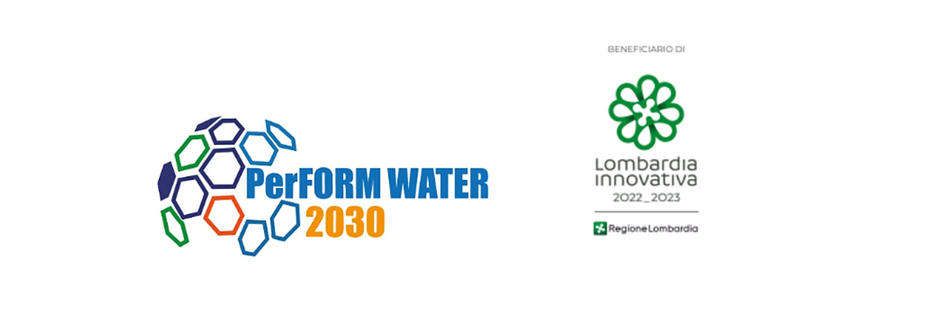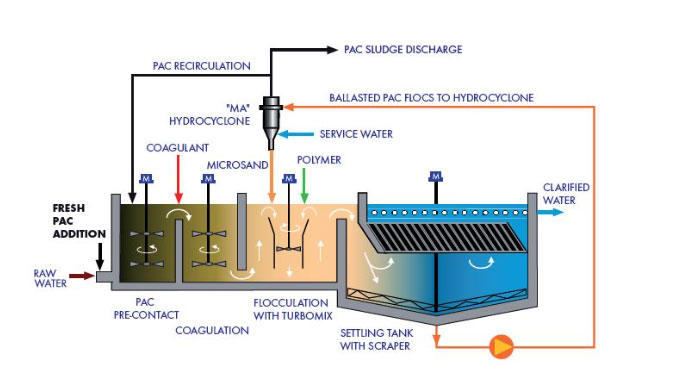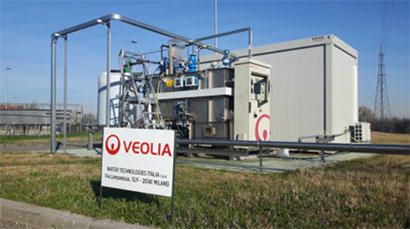
PerFORM WATER 2030 (whose official definition is Platform for Integrated Operation Research and Management of Public Water towards 2030) is the first research and experimentation platform created in Italy to address the challenges of the Integrated Water Service.
The project had as its leader Gruppo CAP and involved eight other companies (including Veolia Water Technologies Italy), two universities and one research institute, for an investment of approximately 9 million euros, half of which was granted by Regione Lombardia.
PerFORM WATER 2030 started in May 2017, it was extended until the end of December 2020 due to the pandemic and received the Lombardia Innovativa award at the beginning of this year. This award is assigned by Regione Lombardia to public-private partnerships that adopt innovative models and generate added value in the field of research and innovation, with positive effects on the local territory and on the citizens.
This recognition aims at promoting and enhancing research and innovation by recognizing innovative models, proposed by entrepreneurial excellence within the Lombardia region, capable of generating value and increasing the competitiveness and development of the territory in the context of eight different ecosystems: nutrition, health and life science, culture and knowledge, connectivity and information, smart mobility and architecture, sustainability, social development and advanced manufacturing.
The four research areas of the PerFORM WATER 2030 project were:
- Water
- Sludge
- Energy
- Sustainability
Activities carried out within the water area
Within the water area, two main technological solutions dedicated to the removal of emerging micropollutants from wastewater have been studied under the leadership of Veolia Water Technologies Italia:
- the adsorption on activated carbon
- the oxidation with ozone.
With regards to the first technological solution, adsorption is a phase transfer process in which an accumulation of substances originally in the liquid phase occurs on a porous solid surface called an adsorbent.
Activated carbon is a material characterized by a very high specific surface, developed within microscopic porosity, and capable of retaining certain types of chemical compounds on its surface by means of chemical and physical phenomena.
More specifically, activated carbon is able to adsorb poorly polar organic compounds, a category that includes many of the emerging micropollutants. Therefore, the use of this material as an additional process to conventional wastewater treatment plants allows to achieve high removal efficiencies even on some emerging micropollutants as well as on conventional pollutants.
For these reasons, activated carbon is the most widely used adsorbent solid in wastewater treatment and is produced from materials rich in carbon, of mineral or vegetable origin.
Activated carbon can be used in treatment plants in two forms: powdered activated carbon (PAC) and granular activated carbon (GAC). During this research project, it was decided to use PAC, a very fine powder with a high specific surface.
In particular, the innovative technology based on PAC for the removal of emerging micropollutants used for this pilot project was the Actiflo® Carb. This technology has proven to be highly efficient in retaining non-flocculable organic matter, odors, flavors and some conventional contaminants, as well as emerging micropollutants.

Within this project, Veolia Water Technologies Italy carried out the design and the construction of the pilot plant and, together with the DICA-AMB department of the Politecnico di Milano, defined the experimental plan and provided scientific support for setting up the trial activity aimed at identifying the optimal parameters for a cost-benefit study, in order to replicate it in the future on a real scale. In addition, the results collected and processed were statistically analyzed to define the best possible operating models of the plant.
IRSA-CNR carried out a first screening campaign of various emerging and non-emerging micropollutants (drugs, products of industrial origin and for personal care, fragrances, etc.) and carried out the analysis of the micropollutants for the samples provided during the trial, as well as specific ecotoxicity tests on selected samples.
Gruppo CAP in addition to being the leader of the entire PerFORM WATER 2030 project, in this specific project has made available the San Giuliano Milanese Est municipal WWTP by preparing the pilot location area and the necessary electrical-hydraulic connections and by building an ad hoc analysis laboratory at the San Giuliano Milanese Ovest municipal WWTP.
How was the pilot plant built for the trial?
The Actiflo Carb pilot plant for the removal of emerging micropollutants was positioned at the outlet from the secondary sedimentation tanks and upstream of the chemical disinfection process of the San Giuliano Milanese Est WWTP.
The system worked with an inlet flow rate, Qin, which varied between 4 and 9 m3/h, according to the configuration to be adopted. The recirculation flow rate has been approximately 10% of the Qin. Two valves for sludge recirculation and purge were installed in the system, with an opening / closing variable timing depending on the solids to be removed from the system.
The plant was completed with dosing of fresh PAC and two reagents: ferric chloride (FeCl3) and polyelectrolyte; these can change according to the experimental phase chosen, but within a range that varies between 5-20 ppm for fresh PAC, 2-7 mg/l of Fe and 0.5-1.5 mg/l of polyelectrolyte. The concentration of activated carbon in the system has been kept between 1 and 3 g/l. Finally, the micro-sand, which has the task of ballasting the flakes and therefore facilitating their sedimentation, had a concentration between 5 and 10 g/l.

Conclusions
Traditional wastewater treatment plants have a limited ability to remove many micropollutants because they have been designed to remove other types of pollutants (for example, BOD, ammonia, phosphorus, pathogens, etc.), present in concentrations up to one million times greater.
Although the European Union promulgated Directive 2008/105/EC more than ten years ago, which establishes environmental quality standards for waters, recognizes some of these compounds as priority or dangerous and defines maximum permissible concentration limits in water bodies and sediments, to date there is no legislation in Italy, or in other European countries, that defines a target for the removal of micropollutants from wastewater discharged into the environment.
Considering as a reference the 80% removal (as a whole and not for the single micropollutants) required by the Swiss legislation, we can affirm that the results obtained thanks to the Actiflo Carb pilot plant have shown the possibility of fully reaching this objective.
In fact, the studies conducted on the pilot plant made it possible to test different dosages of activated carbon and different operating settings, in order to obtain the best possible configuration to minimize both the dosage and the operating costs, keeping the plant at optimal performance levels.


